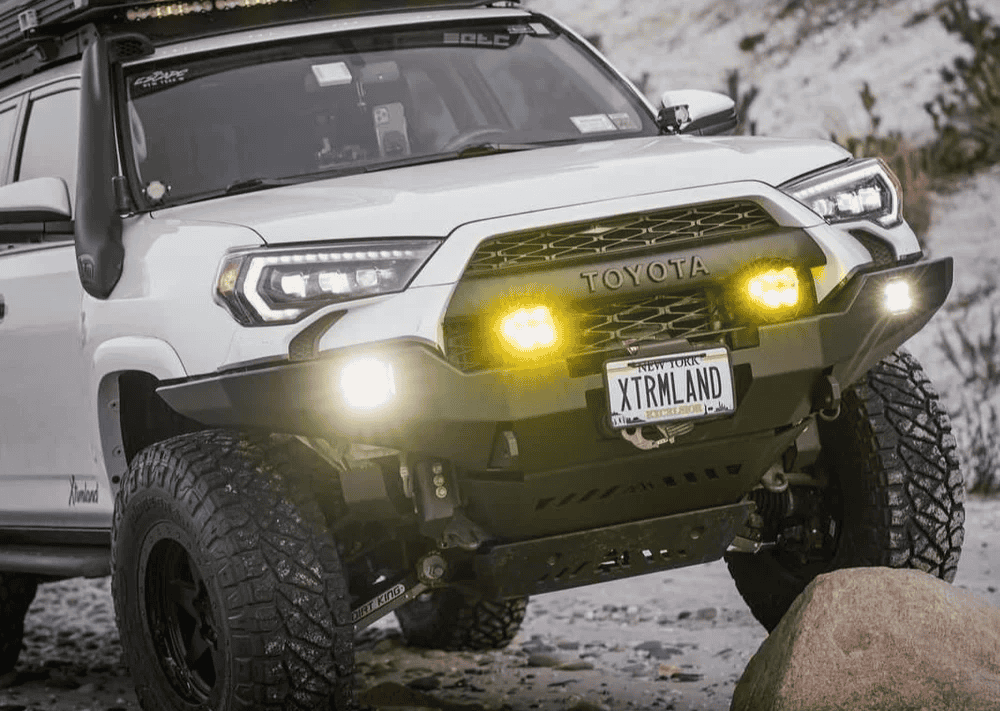Overland Vehicles

When cell coverage fades, a layered approach keeps you in touch. Think of your system as three lanes that work together. Data for maps and messaging, voice for quick coordination, and broadcast for situational awareness. Starlink provides high speed data anywhere with a clear view of the sky. GMRS brings clear voice across a group and can reach even farther with repeaters. Satellite radio fills in regional weather, roadway, and incident updates without relying on towers.
Starlink offers low earth orbit satellite internet with latency that supports mapping, cloud sync, weather overlays, and video calls. It needs a broad view of the sky and prefers minimal obstruction from trees or canyon walls. Power draw varies by dish and router pairing, so plan for steady DC power and peak loads at startup. Mount the dish where the sky view is best and route cables to avoid sharp bends and electrical noise. Expect the best results when you park with open sky toward the dominant satellite arc in your region.
GMRS is ideal for driver to driver comms and group coordination. It delivers better range and clarity than unlicensed handhelds and supports repeaters for longer hops. A license is required in the United States but covers a family unit and is simple to obtain. Use proper radio etiquette, identify as required, and note that higher antenna placement usually improves range more than extra power alone. Pre plan shared channels and tones so your convoy can switch quickly if a local repeater is busy.
Satellite radio is not a two way system, yet it is invaluable in remote zones. Continuous weather, traffic, public safety notices, and sports or news can reduce uncertainty on long hauls. Pair it with NOAA weather radio where available for short term storm tracking. In alpine or desert travel, hearing a dust storm or flash flood bulletin early can shape your route before you commit to a pass or wash.
Reliable communication starts with clean power and smart mounting. Size your battery bank to handle sustained loads from a dish and router while leaving margin for heat or cold derating. Keep radio and data cabling separate from high current lines to reduce interference. Use proper grounding and consider ferrite chokes on long runs if you hear alternator whine or router noise near radios. Roof racks and cargo can shadow antennas, so test positions with temporary mounts before drilling. In wooded regions, a mast can raise a GMRS antenna above the canopy, while a clear roof panel can give the dish a better view of the sky.
Small details matter in harsh weather. Cold can stiffen cables and increase resistance. Heat can throttle routers and radios. Use outdoor rated cabling, weatherproof bulkhead fittings, and gaskets that tolerate thermal cycling. Secure strain relief so connectors are not bearing weight when bouncing down washboard roads.
Redundancy turns a gear list into a system. Pair Starlink for data with offline maps as a fallback. Pair GMRS with an agreed check in schedule and channel plan. Add satellite radio for ongoing context about the region. In convoy travel, designate a comms lead, a tail unit, and a plan for lost contact. Practice simple message templates for hazards, fuel status, and route changes so everyone hears the same concise info under stress.
Before a remote trip, verify coverage and settings. Update device firmware, confirm GMRS repeaters along your route, and test the dish at home so you know its behavior under tree cover. If you support a jobsite or a production crew, consider a dedicated router that can blend satellite data with any available cellular for extra resilience. When you return, log what worked and where gaps appeared. Over time, your plan becomes muscle memory.
OZK Customs helps travelers build and integrate these systems into real world rigs. Our team designs clean power paths, antenna placement, and roof layouts that reduce obstruction and noise. Explore our Overland Rigs to see how we configure platforms for remote work and play. If you are planning a specialized setup, our Custom Overland Upfit process covers everything from power system design to radio and data integration testing. Curious about our approach and build quality. Visit Why Choose OZK Customs for our story and standards.
You have options. The smartest path is a balanced system tailored to your routes, crew size, and power budget. Share your travel pattern, the gear you already own, and the challenges you face. We will map out a clear plan, install Starlink hardware, tune GMRS performance, position antennas, and validate the whole setup before handoff. When the horizon goes quiet, your rig will not.
At OZK Customs in Northwest Arkansas, we build complete adventure vans and overland rigs, upfit commercial platforms, and install communication, power, and storage systems that stand up to rough travel. Start here: Overland Rigs and Custom Overland Upfit. Learn more about our process at Why Choose OZK Customs.
Ready to spec the right mix of Starlink, GMRS, and satellite radio for your build. Share your trip style and we will design, install, and test a dependable system that fits your rig and your routes.
ADDRESS:
6159 E Huntsville Rd, Fayetteville, AR 72701
PHONE:
(479) 326-9200
EMAIL:
info@ozkvans.com